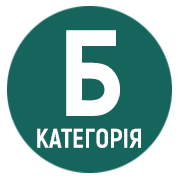STRUCTURAL AND NARRATIVE NATURE OF THE LITERARY REPORTING GENRE (AS EXEMPLIFIED IN REPORTS ON THE RUSSIAN-UKRAINIAN WAR)
DOI:
https://doi.org/10.32782/2412-933X/2025-XXIV-15Keywords:
literary reporting, genre, non-fiction, narrative, Russian-Ukrainian warAbstract
The paper examines the genre of literary reporting, its structural manifestations, narrative features, and the role of the author. Literary reporting covering the Russian-Ukrainian war has been used as a case study. The paper focuses on the syncretism of the genre, the interaction of media principles and literature in the nature of the genre. The development of Ukrainian literary reporting largely benefited from the resurgence of the experience of Ukrainian reporting in the 1920s, the Samovydets literary reporting contest, and the influence of the Polish school of reporting. In terms of structural representation of literary reports, the paper identifies such types of representation as a single genre, insertion genre, and the use of reporting techniques. Reporting is becoming a hallmark of style. The reporting “technique” easily penetrates other genres. The subjective organization of texts and the role of focusing have been emphasized. Notably, the authors experiment with the manner of narration, employing a variety of methods.Reporting on the Russian-Ukrainian war can be classified according to different criteria: reports by one author (Myroslav Laiuk, Yelizaveta Honcharova, etc.), anthologies of reports by different authors (“War. Life defacto” (2016), “77 Days of February. Ukraine between the Two Symbolic Dates of the Russian War Ideology” (2023), etc.), reports on certain cities that have experienced the most military trials (Bakhmut, Mariupol, Kherson, etc.), and reports for each year of the war. In collections of reports, forewords and afterwords are pivotal, as the authors conceptualize the material, indicating the main intentions of the editions. Some examples of works of different genres that use reporting as an insertion genre or apply the reporting style have been provided (“Codename for Job. Chronicles of the Invasion” by Oleksandr Mykhed, “Dance of Death. Diary of a Volunteer of the Donbas Battalion” (2019) by Ihor Mykhailyshyn). The paper presents the reporters’ insights on the creative process and the practice of handling the material.
References
Конкурс художнього репортажу «Самовидець». Остап Сливинський. Facebook. 2013. 17 жовтня. URL: https://www.facebook.com/profile/100057255529190/search/?q=сливинський&locale=uk_UA (дата звернення: 20.05.2025).
Корнієнко Н. Слова і кулі. Київ : Vivat, 2024. 400 с.
Курико В. Не відвертайся. Навіщо нам художній репортаж. URL: https://www.verbum.com.ua/06/2021/the-media-problem/dont-turn-away/
Лаюк М. Бахмут. Київ : Українер, 2023. 255 с.
Михед О. Позивний для Йова. Хроніки вторгнення. Львів : Видавництво Старого Лева, 2023. 344 с.
Мочернюк Н. Репортаж у публіцистичній і художній літературі: комунікативні особливості. Studia methodologica. Тернопіль : Редакційно-видавничий відділ ТНПУ ім. В. Гнатюка, 2008. Випуск 24. С. 211–214.
«Найстрашніші дні мого життя». Репортажі The Reconing Project / упор. Н. Гуменюк. Львів : Човен, 2023. 256 c.
77 днів лютого. Україна між двома символічними датами російської ідеології війни. Київ : Лабораторія, 2023. 224 с.
Шутяк Л.М. «Новий журналізм» у медійному дискурсі України: ґенеза та жанрово-стилістичні ознаки : дис. … канд. наук. із соціальних комунікацій. Дніпропетровськ, 2015. 216 с.
Veni. Vidi. Skripsi: Війна. Життя de facto. Київ : Темпора, 2016. 266 с.






